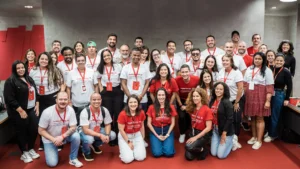Research shows that ordering online is a way to escape food deserts
In the United States, delivery apps are allowing thousands of low-income people to have access to fresh food, reveals a report research done by the Brookings Institution. This happens because asking for apps is an alternative for those who cannot buy them in person.
Research shows that about 90% of Americans who live in areas with low fresh food supplies — so-called food deserts, one of the causes of hunger in the country—have access to at least one of the four digital food delivery services examined in the study.
Researchers analyzed fresh food deliveries from Amazon Fresh, retailer Whole Foods, Instacart, Uber Eats and Walmart and found that low-income families are ordering fresh food. And there was an increase in this consumption between 2020 and 2022, especially after the US government expanded the offer of welfare benefits and food stamps to buy food online due to the Covid-19 pandemic.
A curious finding of the study is that people who live in rural areas may be far from markets that sell fresh food, and therefore need delivery much more to access them than those who live in the city. Lack of internet access and distrust in the quality of food provided by delivery services are also barriers to accessing food online.
Apps and public policies
According to the researchers, if they adopt a business model that does not make it more expensive to buy fresh food than in stores, delivery apps could be part of the solution to the problem of food deserts.
For them, policymakers and the public should consider apps part of the US food system, taking into account the context of communities, the environment and the economy. “As the digital food system is still maturing, now is the ideal time to design policies that help harness efficiencies for the public good,” the research states.
Among the experts' suggestions for new public policies are allowing food stamps to cover app delivery fees and other additional costs of online ordering, as well as expanding government food benefits to include online purchases and providing subsidies to expand access. the Internet.


